Discover the art of Wabi-Sabi in interior design
You are looking of an interior design concept that transcends fleeting trends and resonates with your soul? Do not look any further ! Wabi-sabi, an ancient Japanese philosophy, embraces imperfection, simplicity and authenticity. Let's dive into thehistory of wabi sabi, let's examine its relevance today and reveal how you can effortlessly infuse its essence into your interior.
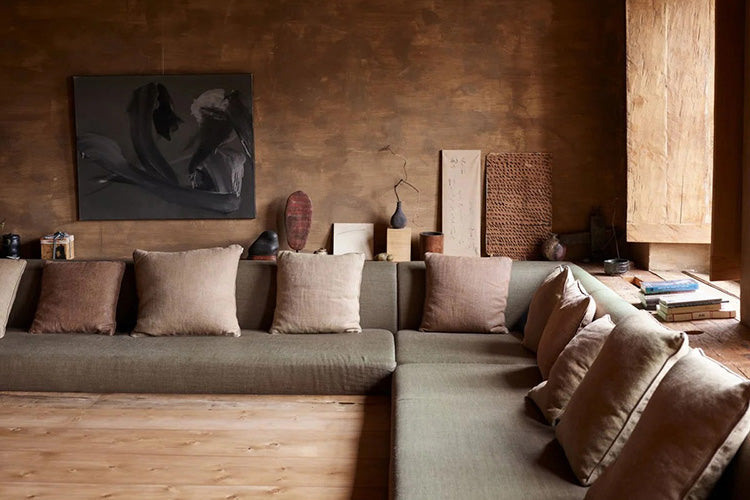
What is the Wabi-Sabi style?
Wabi-Sabi is a style of design derived from an ancient Japanese philosophy, which emphasizes the beauty of imperfections, thehas simplicity and authenticity. The concept focuses on accepting the transience and imperfections of life, creating spaces that feel harmonious, grounded and connected to nature. Wabi-Sabi transcends traditional aesthetics and challenges us to rethink our relationship with material possessions and the passage of time.
By incorporating wabi-sabi elements into our homes, we create spaces that encourage reflection, self-awareness and appreciation of the natural world. For example, a weathered wooden table, with jagged edges and visible knots, celebrates the story of the tree, inviting a deep connection with nature and the story behind the materials.

Discover the T-Lab Wooden Figurines to Enhance your Interior with the Wabi-Sabi Style
If you are seduced by the philosophy and aesthetics of Wabi-Sabi, do not miss the opportunity to discover our magnificent collection of T-Lab wooden figurines. These charming handcrafted creations are the perfect example of the harmony between art and nature, embodying the simplicity and authenticity dear to the Wabi-Sabi style. Designed from natural materials and shaped with care, these figurines will bring a touch of serenity and timeless elegance to your interior.
Whether you want to decorate your shelves, your office or your living room, T-Lab wooden figurines will charm you with their soft shapes and delicate details. Each piece is unique and carries with it the story of its creator, thus adding a personal and emotional dimension to your decoration. Immerse yourself in the world of Wabi-Sabi and invite harmony and natural beauty into your home with T-Lab wooden figurines. Meet here to explore our selection and find the pieces that will brighten up your living space.
Wabi-Sabi: A timeless journey through Japanese philosophy
Wabi-sabi is deeply rooted in Chinese Zen Buddhism, celebrating the allure of natural imperfections and the transience of life. In the sixteenth century, Japan adopted this philosophy and integrated it into the tea ceremony, a practice centered on simplicity, harmony and respect for nature. The tea room, decorated with natural materials and discreet colors, illustrates the application of Wabi-Sabi in interior decoration.

Chinese Zen Buddhism: The Foundations of Wabi-Sabi
The origins of wabi-sabi therefore go back to Chinese Zen Buddhism, more precisely to the teachings of Taoism and the concept of "mujo" or impermanence. Zen Buddhism, which emphasizes meditation and the search for enlightenment, encourages the appreciation of simple, unadorned beauty. He emphasized the beauty of imperfection, the transience of life, and the value of simplicity. These ideas laid the foundation for the development of wabi-sabi as a unique and distinct Japanese aesthetic.

The emergence of wabi-sabi in Japan
In the 16th century, wabi-sabi emerged as a distinct design philosophy in Japan, partly through the influence of tea masters like Sen no Rikyu. Rikyu, highly respected figure in Japanese history, revolutionized the tea ceremony by diverting it from ostentatious displays of wealth in favor of a more humble and restrained aesthetic. He believed the tea ceremony should reflect the principles of Zen Buddhism and encourage a deeper connection with nature, simplicity and harmony.
Rikyu's vision for the tea ceremony led to the incorporation principles of Wabi-Sabi, resulting in a more authentic and unpretentious experience. The teahouses designed by Rikyu and his contemporaries are characterized by natural materials, rustic architecture and subtle decorations that embody the wabi-sabi philosophy.

The influence of wabi-sabi on Japanese art and culture
The incorporation of wabi-sabi principles into the tea ceremony has had a profound and lasting impact on Japanese culture and aesthetics. Over time, the principles of wabi-sabi began to influence various aspects of Japanese art, such as pottery, calligraphy, and ikebana (Japanese flower arranging). Wabi-sabi-inspired pottery often features irregular shapes, rough textures and subtle glazes, reflecting the beauty of imperfection and the natural world.
"The incorporation of wabi-sabi principles into the tea ceremony has had a profound and lasting impact on Japanese culture and aesthetics."
In Japanese gardens, the principles of wabi-sabi translate into the use of natural and asymmetrical elements, such as rocks, moss, and bodies of water. The design emphasizes harmony with nature and the ever-changing landscape, embodying the essence of impermanence.
The philosophy of Wabi-Sabi also had a significant impact on Japanese architecture. Traditional Japanese homes often use natural materials, such as wood, paper, and bamboo, and are designed to create a sense of harmony between indoor and outdoor spaces.

Wabi-Sabi's Enduring Legacy
Wabi-sabi remains an essential aspect of Japanese culture and aesthetics. The emphasis on simplicity, harmony and the beauty of imperfection has inspired countless artists, designers and architects over the centuries. Timeless philosophy deeply linked to Zen Buddhism, wabi-sabi transcends short-lived design trends and offers a profound perspective on the nature of beauty and human experience.
A unique fusion: Wabi-Sabi meets contemporary design
If wabi-sabi shares commonalities with minimalism and hygge, he puts forward the notion of imperfection. It is not about creating a perfect home, but about appreciating the beauty of imperfections, recognizing the natural aging of objects and accepting the passage of time.

Unveil the charm of Wabi-Sabi in your living space
To imbue your home with Wabi-Sabi, opt for natural materials such as wood, stone and linen, and choose muted, earthy hues to create a serene ambiance. Celebrate imperfections by proudly displaying signs of wear. Handmade and handicrafts, such as natural carpets, textiles and ceramics, carry history and soul. By decluttering your space and keeping only loved and essential items, you can truly appreciate the beauty of each room.

Celebrate the poetry of imperfection
Incorporate Wabi-Sabi into the layout of your home not only helps to create a visually stunning and soothing space, but also fosters a more mindful and authentic way of living. By honoring imperfections, we can appreciate the poetry of life's transience and the distinctive features of our homes. So feel free to immerse yourself in the world of Wabi-Sabi and witness the transformative power of accepting life's beautiful imperfections.
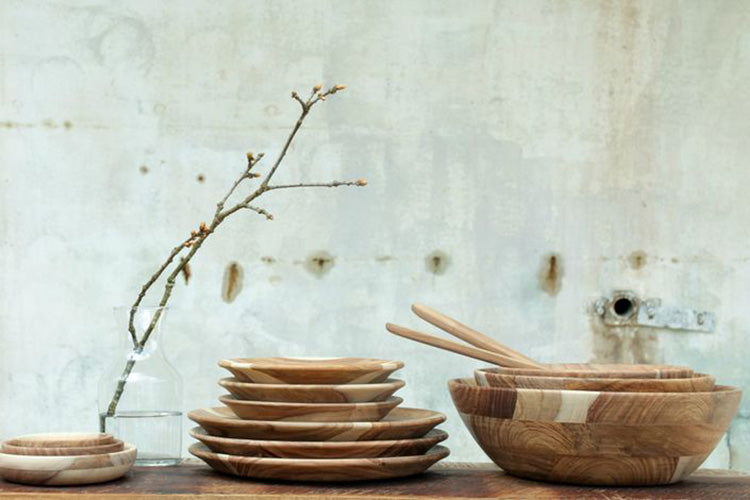
The Tea Ceremony: A Living Expression of Wabi-Sabi
The tea ceremony, known as "Chanoyu" in Japanese, is a vivid example of Wabi-Sabi's integration into Japanese culture. The ceremony is a meditative experience that aims to create a harmonious connection between the host, the guests and nature. The tea room, adorned with natural materials and muted colors, illustrates the application of wabi-sabi in interior design.
From the carefully chosen utensils to the deliberate movements of the host, every aspect of the ceremony embodies the principles of wabi-sabi. Tea bowls, often handmade and featuring irregular shapes and textures, represent the beauty of imperfection. Ceremony itself recalls the fleeting nature of life, as the delicate foam on the surface of the tea dissolves, symbolizing the transience of each moment.
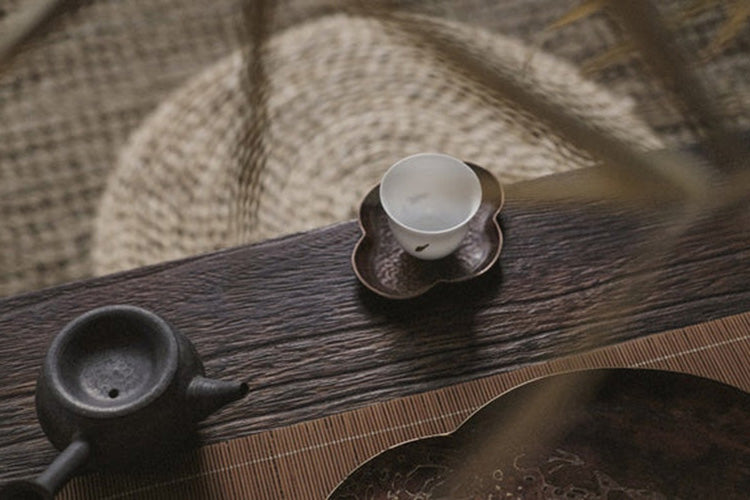
What are the Wabi-Sabi design elements?
Wabi-Sabi design elements are rooted in natural materials and the celebration of life's imperfections. To create a Wabi-Sabi interior, the following aspects must be taken into account:
Natural materials
Emphasize textures found in nature, such as wood, stone and flax. By using materials that age gracefully, you create a space that resonates with the transience of life.

Muted and earthy colors
Choose colors inspired by nature, including shades of gray, beige, brown and green. These tones favor serenity and tranquility while connecting the space to the natural world.

Handmade and handcrafted items
Incorporate items with a personal touch, such as handwoven textiles or handmade ceramics. These unique pieces often present small imperfections that reflect the human touch and make each object unique.
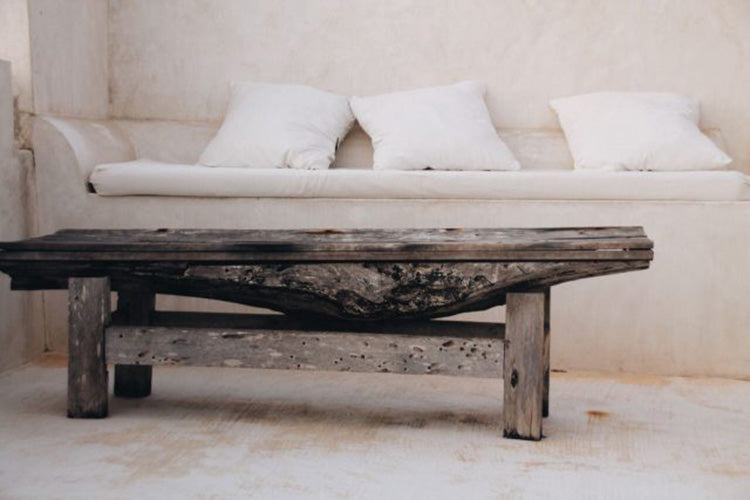
Simplicity and minimalism
Take a "less is more" approach by decluttering your space and keeping only the significant and essential objects. This practice allows you to appreciate more the objects that remain.

Signs of wear and visible imperfections
Accept the natural process of aging of materials, such as cracks, chips or patina, because they tell a story and add depth to your space.

Who is the famous designer wabi-sabi?
Although there is no particular "famous" wabi-sabi designer, Leonard Koren, an American artist and writer, was instrumental in popularizing the wabi-sabi concept in the West. His book, "Wabi-Sabi for Artists, Designers, Poets & Philosophers", played an important role in introducing the principles of Wabi-Sabi to a wider audience.
Koren's book explores the history and philosophy of Wabi-Sabi, encouraging readers to consider the impermanent and imperfect nature of life. Through his writings he has inspired by countless designers and homeowners to embrace wabi-sabi principles in their living spaces, fostering a deeper connection with the natural world and a more conscious approach to design.

How to create a Wabi-Sabi interior?
Creating a wabi-sabi interior is a journey that encourages self-reflection, mindfulness and connection with nature. To imbue your living space with the essence of wabi-sabi, follow these steps:
Choose natural materials and textures: Choose materials that age gracefully and bear witness to the passage of time, like wood, stone and linen. For example, a dining table made from reclaimed wood embodies the Wabi-Sabi spirit by showcasing its natural imperfections and history.
Use muted and earthy colors: Choose hues inspired by the natural world, like grays, beiges and browns, to evoke a sense of calm and tranquility. Paint your walls in soft, neutral tones and add textured fabrics in complementary hues.
Incorporate handmade and crafted items: Display objects with a personal touch, such as handwoven textiles or handcrafted ceramics, to celebrate their unique imperfections and the human touch that hides behind each piece. For example, a hand-turned ceramic vase may have slight irregularities that tell a story and make it unique.
Embrace simplicity and minimalism: Take the “less is more” approach by decluttering your space and keeping only useful and essential items. This practice allows for a greater appreciation of the remaining objects, emphasizing their beauty and usefulness. For example, reduce the decoration of your living room and highlight only a few carefully selected items that have personal meaning.
Show signs of wear and blemishes: Celebrate the process natural aging materials and objects, like cracks, chips, or patina, because they tell a story and add depth to your space. For example, a well-worn leather armchair can evoke a sense of history and comfort, inviting relaxation and reflection.
Incorporate natural elements and organic shapes: Bring the outdoors in by adding plants, stones or other natural elements that resonate with the Wabi-Sabi philosophy. For example, a driftwood sculpture can be a remarkable centerpiece, representing the resilience and transformation of nature.
Create a connection with the passage of time: Choose objects and materials that bear the marks of time, such as aged wood or weathered metal. These objects remind us of the impermanence of life and
encourage you to appreciate the present moment. For example, an antique mirror with a worn frame can be a stunning focal point, reflecting the beauty of its surroundings and the passage of time.
By incorporating these elements into your living space, you create an environment that is both visually appealing and spiritually grounded, promoting a deeper connection with the natural world and a more conscious approach to design.

What are the 7 principles of Wabi-Sabi?
The 7 Principles of Wabi-Sabi, inspired by Zen Buddhism, offer guidance for achieving harmony and balance in our living spaces and lives. These principles are:
- Kanso (simplicity): Eliminate clutter and unnecessary objects to create a clean, functional and welcoming space. A minimalist approach allows the essentials to shine.
- Fukinsei (asymmetry or irregularity): Embrace the beauty of asymmetry, irregularity and imperfection, as they represent the organic and natural aspects of life.
- Shibumi (understated elegance): Cultivating an atmosphere of understated elegance, characterized by a subtle, understated beauty that inspires a sense of calm and serenity.
- Shizen (nature): Foster a connection with nature by incorporating natural elements, organic shapes and materials that reflect the outside world.
- Yugen (subtle depth): Create spaces that evoke a sense of mystery, depth and deep connection to the universe, encouraging contemplation and self-reflection.
- Datsuzoku (freedom from convention): Break free from conventional design norms and expectations, to allow a more authentic and personal expression of your living space.
- Seijaku (tranquility): Designing spaces that promote peace, calm and tranquility, allowing moments of reflection and introspection.
By adopting these principles, you can create a living space that is both visually appealing and spiritually nurturing, promoting a deeper connection with the natural world and a more conscious approach to design.

Conclusion: The Eternal Beauty of Wabi-Sabi and the Art of Wooden Figurines
The Wabi-Sabi is goodn more than just a design trend ; it is a timeless philosophy capable of transforming our way of life. By accepting imperfection, simplicity and the fleeting nature of existence, we can find harmony in the imperfect and appreciate the beauty of every moment. Whether through the tea ceremony or modern home decor, the eternal journey of Wabi-Sabi continues to inspire us, providing a deep connection with the natural world and a more mindful approach to life.
If you want to integrate the spirit of Wabi-Sabi into your daily life, we invite you to discover our charming T-Lab wooden figurines on "https://www.polepole-animals.eu/". These adorable handcrafted creations, made from natural materials, perfectly embody the philosophy of Wabi-Sabi and will bring a touch of authenticity and serenity to your interior. Let yourself be seduced by the eternal beauty of Wabi-Sabi and explore our selection of wooden figurines to enrich your living space.


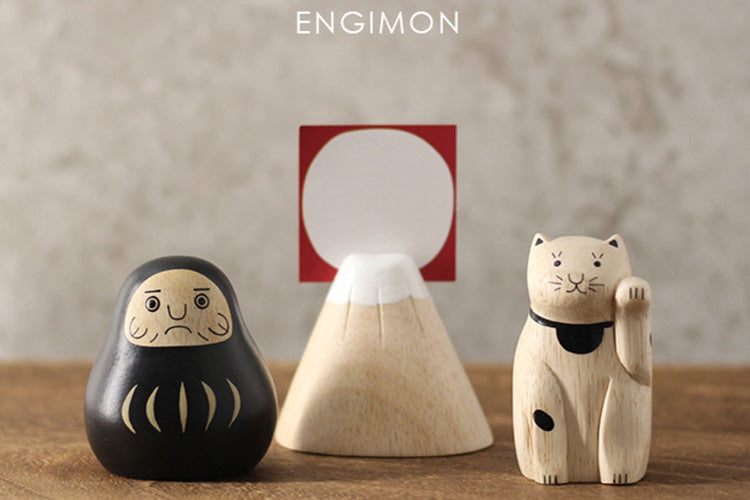


Leave a comment
All comments are moderated before being published.
This site is protected by hCaptcha and the hCaptcha Privacy Policy and Terms of Service apply.